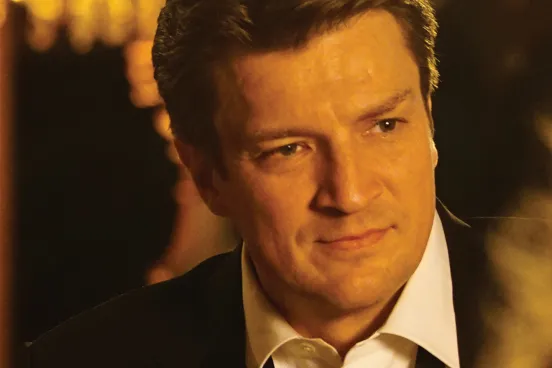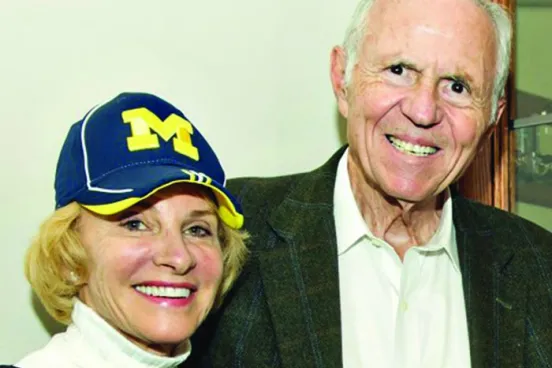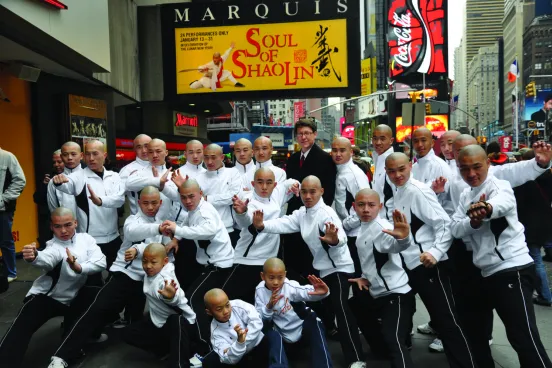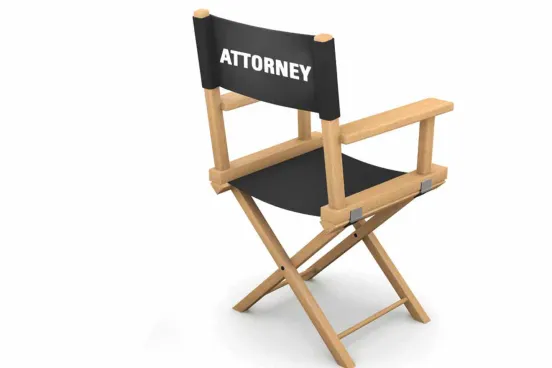The blowtorch beautician. Libel by insinuendo. Justice hidden in the Motor City. With cases in their repertoire that read like mystery thrillers, suffice it to say that Leonard M. Niehoff, ’84, and James E. Stewart, ’73, have not lacked intrigue in their 30-year media law partnership.
Not to be mistaken for entertainment law, which is largely defined by the needs and special interests of talent, or communications law, which relates to regulatory policy, media law deals primarily with issues concerning the publication of information, such as questions of access, defamation, copyright, and privacy.
Niehoff, a professor from practice at Michigan Law and of counsel at Honigman, Miller, Schwartz and Cohn LLP, where Stewart is partner, remembers the case that clinched his passion for the field as a young associate. The assignment was routine—be present at a hearing for the City of Detroit’s failure to comply with a Freedom of Information Act (FOIA) order; the outcome was the stuff of television drama.
“I had just started working with Jim, and he sent me to the FOIA hearing to get a bit of training,” Niehoff says. “He told me all that was going to happen was that the judge would give the City more time to produce the documents. Well, when I got to court I found that the judge was giving me very clear signals that he would entertain a motion to hold the City in contempt of court.”
Despite his rookie status, Niehoff recognized the signals and entered the motion. The deputy mayor was taken to jail. “It took me five minutes to convince Jim of what had happened,” Niehoff recalls. The experience laid the foundation for a professional relationship that has spanned three decades.
Throughout their partnership, Niehoff and Stewart have tackled an array of issues in the realm of media law, from privacy and access, to intellectual property and defamation, representing such clients as The Detroit News, MLive, and WJBK Fox 2. Many of these cases, ripe with drama and their own cast of colorful characters, are among the pair’s most beloved anecdotes.
One such tale is Morganroth v. Whitall, which features the blowtorch beautician, an allusion to the plaintiff’s unique method of cutting and styling hair. “This woman had a whole presentation she would do, and she was looking for publicity,” Stewart says. “A reporter covered her demonstration and did the report very tongue-in-cheek.”
The plaintiff sued for libel and invasion of privacy by false light, arguing in the lawsuit that the reporter had intentionally tried to distort and sensationalize the facts of her story.
In defending his client, The Detroit News, Stewart relied on the old adage, “A picture is worth a thousand words,” supplying the court with the full camera roll of photos taken for the story—most of which did not appear in print. He left the judge to draw her own conclusions as to the truth of the reporter’s descriptions. The lower court, and later the Michigan Court of Appeals, threw out the plaintiff’s claims—the latter in a pun-filled opinion that Stewart and Niehoff still quote to one another.

“We’ve had the privilege of representing wonderful clients in print, broadcast, and electronic media, but we’ve also had the privilege of facing some really interesting plaintiffs,” Niehoff adds. For instance, there was the man with reported ties to organized crime who favored suits à la The Godfather, the elderly professor who wound up on the cover of an erotic overseas magazine, and a certain Detroit mayor whose text message scandal was the tipping point for a political-career-ending trial and prison sentence.
By virtue of the intense, personal nature of media law cases, emotions typically run high, Stewart says, adding that, “In a typical defamation case, the reporter feels as if he’s essentially been sued for malpractice and the plaintiff is convinced that he’s been treated horribly and is entitled to lots of money.”
And though the details of every case are different, the outcome, Stewart says, inevitably relies on the weight a judge or jury affords the truth, as in Duran v. Detroit News, another case in the pair’s portfolio.
In 1989, The Detroit News reported that Colombian judge Consuelo Sanchez-Duran, who had indicted drug lord Pablo Escobar for murder two years earlier, was living in Detroit under U.S.-paid protection. Sanchez-Duran sued the newspaper, alleging defamation, invasion of privacy by public disclosure of embarrassing private facts, and reckless endangerment, among other claims. In summary judgment and on appeal, the court ruled in favor of the News.

“This was a case where it was in the public interest to tell the story,” Niehoff says. “We argued that because the judge was ‘hiding in plain sight,’ she was creating safety concerns for those around her. Publicity was of concern to the judge, but safety concerns in the community trumped that. Some privacy cases are based on mistakes, the false or accidental reporting of a fact. Others, like this one, come about when there is a fact that might be private, but the story is so important and so compelling that it has to be told.”
That their clients should have the freedom to tell these stories has remained a guiding principle throughout Niehoff and Stewart’s partnership, even as their practice has had to adapt to changes within the media industry. Large investigative pieces and their libel concerns have given way to online copyright issues and defamation claims stemming from consumer affairs reports. The definition of privacy has shifted with the use of social media. The speed of the news cycle and ease of online publication have influenced the practice of media law.
“In many respects, longstanding media law principles continue to apply despite changes in communications and technology,” Niehoff says. “In other respects, though, we constantly find ourselves on unfamiliar terrain. How do we think about jurisdiction when everything online goes around the world? How do you retract statements that never go away on the Internet? Does the concept of privacy still have any meaning?” But, he hastens to add, media law has always had its mysteries. “For example, why would anyone cut hair with a blowtorch?”







